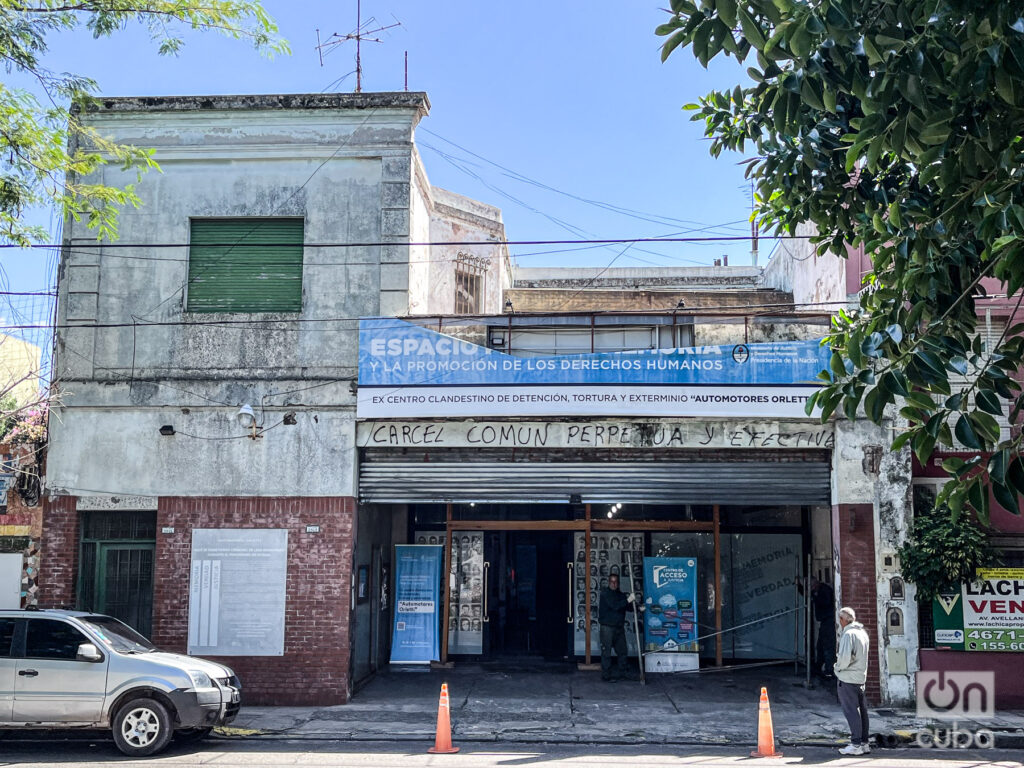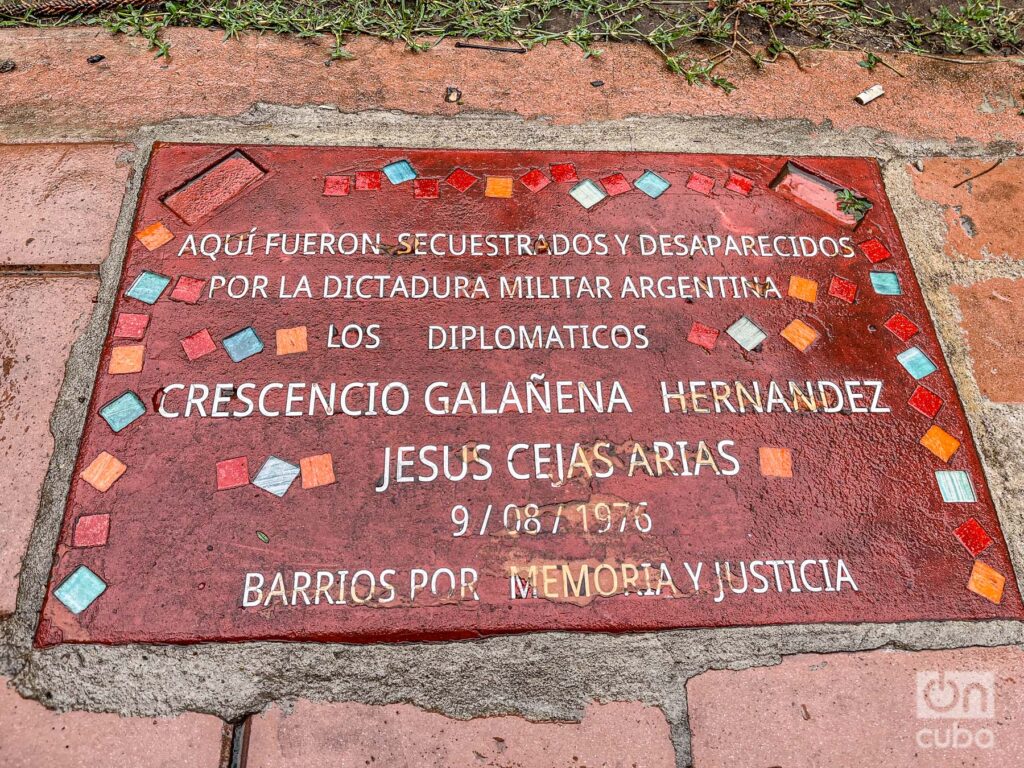A cold afternoon in Buenos Aires, that of August 9, 1976, was the scene. Although Crescencio and Jesús had arrived in Argentina a year ago, the Cubans had not yet gotten used to the southern winter. They bundled up as best they could and left the Cuban Embassy, located in a house on Virrey del Pino Street, Belgrano neighborhood, where they both worked as part of the diplomatic mission.
It was the last time their comrades saw them. Four days later, the newspaper La Opinión published: “The Cuban Embassy in Buenos Aires is working in close contact with the Argentine government in the search for two members of the representation, who are presumed to have been kidnapped.”

For four months Argentina had entered troubled waters. On March 24, 1976, a coup d’état overthrew the three constitutional powers and established a civil-military dictatorship known as the National Reorganization Process.
The new power implemented a systematic plan of state terrorism. The same Argentine government that claimed to collaborate in the search for the missing Cubans would leave, at the end of its eight years in command, the overwhelming balance of 30,000 missing, 500 appropriated babies, and an economically devastated nation.

A week after the disappearance of the Cuban officials, an anonymous envelope arrived at the Associated Press (AP) offices in the Argentine capital. It contained the diplomatic credentials of Crescencio and Jesús, along with a note that stated: “We, both Cubans, are writing to you to communicate that we have deserted the Embassy to enjoy the freedom of the Western world.”
The following day, in a press release, the island’s Foreign Ministry certified the authenticity of the credentials.
Thirty-six years after the episode, in June 2012, also on a cold afternoon, some children were playing on the banks of the Río de la Plata, in the town of San Fernando, about 15 kilometers from the city of Buenos Aires. In the midst of their fun, they found a rusty metal tank containing human remains covered in cement.
They alerted the police, who found two more containers. An intense and detailed search of the area began and, after several months, other skeletal remains were also discovered in rusty tanks.
The Argentine Forensic Anthropology Team (EAAF), together with specialists from the areas of Construction, Mechanics, Surface Processes and Chemistry of the National Institute of Industrial Technology (INTI), began an exhaustive joint investigation.
The tanks were examined, as well as the corrosion products and the earthy and cementitious material adhered to their surface. The tanks discovered between 2012 and 2013 were confirmed to be from a batch dumped into the San Fernando Canal in October 1976. Over time, some had been washed away from the bottom of the river to the shore.
The expert reports on the skeletal remains managed to establish the identity of four missing persons murdered in 1976. Among them, the young Cuban diplomats.

In 2012, it was officially determined which were Crescencio’s remains; and in 2013, those of Jesús. It was also determined that they had been cruelly tortured before dying and thrown into the river in those cement tanks. At the time of their murder, Crescencio and Jesús were 26 and 23 years old, respectively.
Crescencio Galañena Hernández was a native of Yaguajay; Jesús Cejas Arias, from Pinar del Río. Both were part of the custody of the Cuban Embassy in Argentina. It was their first foreign service assignment. They arrived after several threats made to Cuban diplomats in Argentina and an attack perpetrated on the then ambassador, Emilio Aragonés.
Precisely, on that afternoon in 1976, the bodyguards were heading to Aragonés’ residence. Leaving the embassy, they walked just a few blocks to a bus stop, located near a large park known as Barrancas de Belgrano. Although it seemed like an ordinary day, the reality would be different.

According to eyewitnesses, a group of green Ford Falcon cars and a squad made up of dozens of army personnel appeared from all sides. Crescencio and Jesús tried to defend themselves, but were neutralized and kidnapped. It is known that they were transferred alive to a mechanical workshop converted into a clandestine detention and torture center, known as Automotores Orletti, located in the west of the city, in the Buenos Aires neighborhood of Floresta.


This former automotive workshop, rented and conditioned by agents of the State Intelligence Secretariat (SIDE), was one of the execution venues for Operation Condor in Argentina, a criminal pact backed by the United States between this country, Bolivia, Brazil, Chile, Paraguay and Uruguay to coordinate illegal repression and the exchange of leftist political leaders and militants.
Between May and November 1976 it functioned as a base for Tactical Operations 18 (OT 18), under the control of the SIDE in collaboration with the 601st Intelligence Battalion of the First Army Corps. Also called by the repressors as El Jardín, it was the clandestine prison for more than 200 people of Argentine, Bolivian, Chilean, Cuban, Paraguayan and Uruguayan citizenship. Most of these kidnapped people remain missing.

Michael Townley, CIA agent and member of the National Intelligence Department (DINA) of Chile, an instrument of Augusto Pinochet’s dictatorship, arrived in Argentina from the neighboring country expressly to interrogate and torture the Cubans. Guillermo Novo Sampol, another CIA agent of Cuban-American origin, who arrived from Miami, joined the macabre mission.
This was stated in 2003, almost in passing, by retired Chilean general Juan Manuel Guillermo Contreras Sepúlveda in the midst of an extensive interrogation carried out by Argentine federal judge María Servini de Cubría. The judge was investigating the attack in which the former commander-in-chief of the Chilean army and Salvador Allende’s minister, Carlos Prats, and his wife Sofía Cuthbert, died in Buenos Aires in 1974.

Before this interrogation, Servini de Cubría had held a secret meeting in Washington with Michael Townley, who was listed as a protected witness for the United States. In that meeting, the former U.S. agent admitted his participation as the material author of the attack against the Prats and pointed out Contreras Sepúlveda as one of the ringleaders.

A sinister character, Contreras Sepúlveda was director of the DINA and a source paid by the CIA between 1975 and 1977, according to documents distributed by the Central Intelligence Agency (CIA) itself in 2000. In these files, Contreras appears as the “creator” of Operation Condor. He was sentenced to more than 200 years in prison in forty trials for human rights violations.
For the kidnapping and disappearance of both Cubans, among others, the Argentine justice system convicted retired General Rodolfo Cabanillas, who served as head of the SIDE Division “Tactical Operations 18,” which corresponded to Orletti. The repressors Raúl Guglielminetti, Eduardo Alfredo Ruffo and Honorio Carlos Martínez Ruíz were also sentenced. Neither Novo Sampol or Townley could be tried.
After being identified in 2012 and 2013, the remains of the Cubans were repatriated to Cuba and buried by their relatives. Today they rest in their places of origin, Yaguajay and Pinar del Río.
In Argentina, in the central hallway of the Cuban Embassy hangs a large poster with the faces of Crescencio and Jesús, along with their story. Outside the building, since 2023 and under the provision of the Argentine Human Rights Secretariat and the Ministry of Justice and Human Rights, another large sign has been put up that marks the place as a site related to events linked to state terrorism.
A few blocks away, on the sidewalk where the young diplomats were kidnapped, a tile has been placed with their names and the dates of the brutal capture. This is an initiative of “Tiles for Memory,” a project aimed at marking the urban space and reflecting the identities of the detainees who disappeared during the last dictatorship.


Last March 24, National Day of Remembrance for Truth and Justice, during the march in honor of the 30,000, disappeared from the last civil-military dictatorship in Argentina, the faces of Crescencio and Jesús were present among the hundreds of thousands of people who filled the streets of the city.










